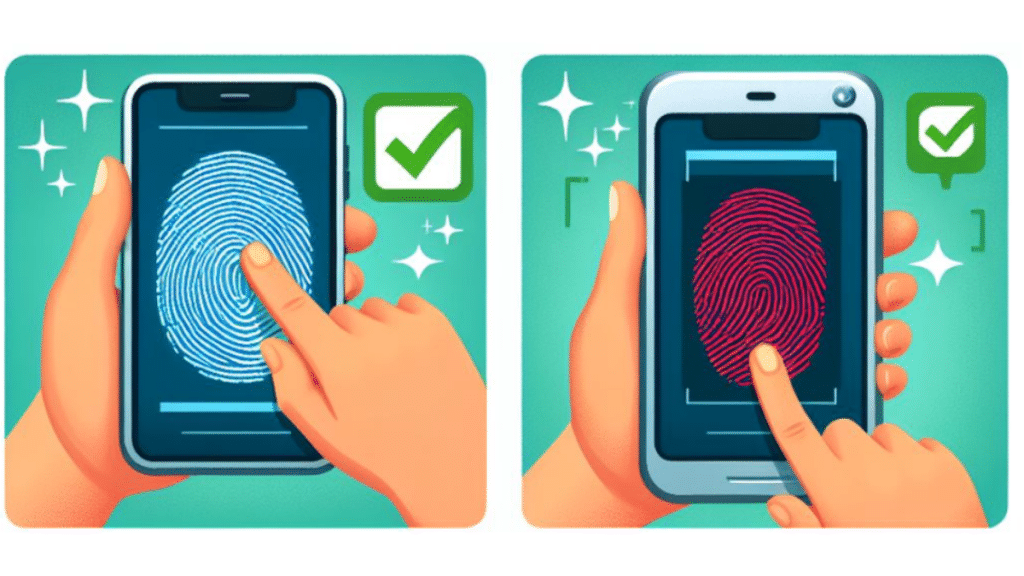Biometric payments are revolutionizing the online transactions industry by providing a more secure, fast, and convenient way to authenticate transactions. Biometric payments are based on the identification of a person’s physical or behavioral characteristics, such as face, fingerprint, voice, or signature.
A research done by the website Casino Banking Methods, explains the essence and types of biometric payments, and how they differ from other payment methods, such as cryptocurrencies and e-wallets.
What are Biometrics?
Biometrics refers to the identification of a person based on his physical characteristics.
Types of biometrics can be different:
- Face scanning: This type of authentication requires you to hold your smartphone close to your face.
- Fingerprint: You’ll access payment tools on your smartphone by verifying your transaction with the touch of your finger using the device’s built-in fingerprint scanner.
- Vein patterns: This biometric identification method, also called vascular technology, is performed by analyzing the patterns of blood vessels visible from the surface of your skin.
- Heart rate sensors: The technology uses methods to track blood flow under the skin and detect heart rate.
- Retina scan: This is a biometric technique that maps the unique patterns of your retina using a low-intensity light source.
- Voice recognition: You verify the transaction using a voice command on your mobile device.
- Signature recognition: This is an example of behavioral biometrics that digitally identifies you based on your handwriting.
Fingerprint scanning is the most common biometric payment method. This is not surprising since this is the easiest and fastest way to authorize.
The growth of Biometrics within the last years
By the end of 2017, more than a third of smartphone owners using a fingerprint scanner had already used a mobile phone to authorize payments. However, we shouldn’t stop there only. Today, there are many types of biometrics that can be used to verify your identity as part of payment authentication.
Surveys showed that more than 60% of European consumers consider biometric payment more secure & convenient than the use of PIN codes and passwords for authorization. Due to several factors:
- Flexibility. Payment systems and casino providers do not need to maintain huge traffic tables to store data. This saves space, which is important in the modern world of digital data.
- Fast authentication. Using biometrics, a gambler gets access to the gaming offer faster. This, in turn, increases online casino profits and improves customer satisfaction.
- Scalability. Biometric functions are a flexible user authentication system. It can be used not only by payments but also by gameplay itself to improve immersion.
- Convenience. With the help of biometric payments, casino operators and payment systems can more conveniently store user data. They are also easy to search and update.
- Accuracy. Since biometric data is unique, online platforms will not have problems with duplicating user authentication data.
The boom in biometric payments is due to the fact that human behavior patterns and physical characteristics are unique.

Advantages and disadvantages of Biometrics Payments
The study lists the advantages of biometric payments for online casinos and players, such as:
- Security and reliability of data transmission, as biometric data are unique and hard to fake.
- Fast transactions without payment delays, as biometric data can be collected and verified instantly, without the need to enter additional information.
- High degree of fraud protection, as biometric data reduce the risk of impersonation and unauthorized access.
- Bonus opportunities, as some online casinos and payment providers may offer incentives for using biometric payments.
- Convenience plus, as biometric payments eliminate the need to remember or change passwords, which can improve online security and privacy.
The article also acknowledges the disadvantages and challenges of biometric payments, such as:
- False positives, as stolen biometric data can be used to create false matches, or similar biometric data can cause errors.
- Malfunction, as biometric payments rely on software that can fail or crash, and data recovery can be difficult.
- High implementation cost, as biometric systems can be expensive and require maintenance and updates.
- Scanner issues, as biometric devices can be affected by environmental or physical factors, such as dirt, light, or injuries.
- Privacy issues, as biometric data can be collected and misused by unverified or unlicensed online casinos, or compromised by hackers.
The article concludes that biometric payments are a modern and innovative feature that can enhance the online gambling experience by offering more security, speed, and convenience. However, biometric payments also have some drawbacks and risks that need to be addressed and resolved. The article suggests that online casinos and payment providers should prioritize user privacy and data protection, and implement strong authentication systems and transparent policies.
If you want to review the full study, you can access the full article here.

